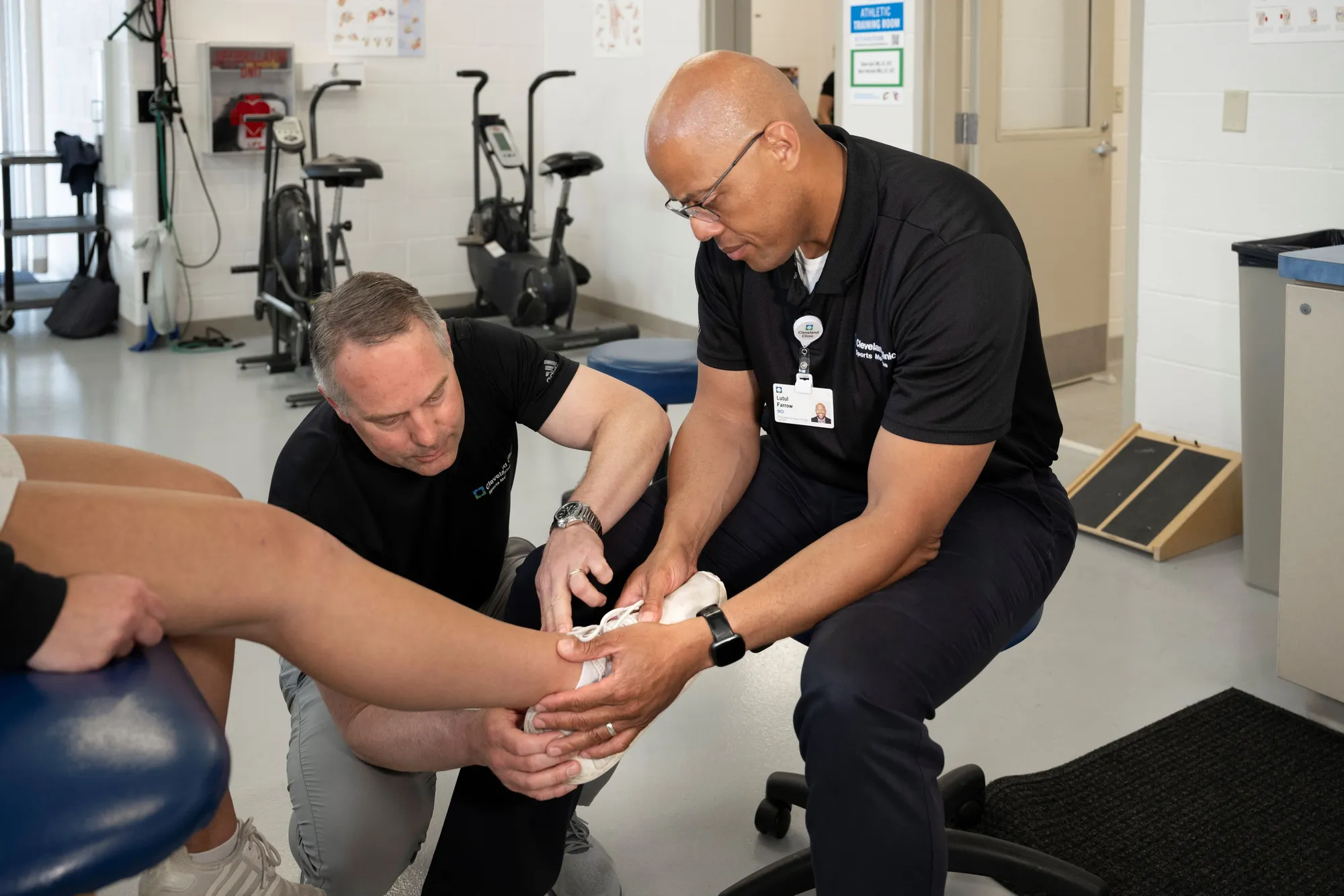Sports have long been a cornerstone of human culture, offering entertainment, competition, and personal fulfillment. But alongside the thrill of victory and the spirit of teamwork comes the risk of injury, overuse, and physical strain. That’s where sports medicine plays a vital role—a field dedicated to helping athletes, active individuals, and even everyday fitness enthusiasts maintain peak performance while minimizing and treating injuries.
This article explores the scope of sports medicine, its importance in modern athletics, common injuries, rehabilitation strategies, and the growing role of technology in safeguarding health and enhancing performance.
What Is Sports Medicine?
Sports medicine is a specialized branch of healthcare that focuses on physical fitness, injury prevention, and the treatment of sports-related conditions. It is not limited to professional athletes—students, recreational exercisers, and weekend warriors can all benefit from sports medical care.
This field is highly interdisciplinary, involving professionals such as:
-
Sports physicians – Diagnose and treat injuries.
-
Physiotherapists – Aid in recovery and rehabilitation.
-
Athletic trainers – Provide on-site care during training and games.
-
Nutritionists – Design diets to optimize performance and recovery.
-
Orthopedic surgeons – Handle severe musculoskeletal injuries.
By combining medical expertise with an understanding of athletic demands, sports medicine ensures both recovery and performance optimization.
Common Sports Injuries
Despite advances in training methods and protective gear, injuries remain a reality in sports. They can range from acute trauma to chronic conditions caused by repetitive stress.
-
Sprains and Strains
-
Sprains involve ligaments, while strains involve muscles or tendons.
-
Common in sports that require sudden movements, like basketball or soccer.
-
-
Fractures
-
Broken bones occur from impact, falls, or stress over time.
-
Stress fractures are common in runners due to repetitive impact.
-
-
Concussions
-
A type of traumatic brain injury caused by blows to the head.
-
A growing concern in contact sports like football, boxing, and rugby.
-
-
Tendonitis
-
Inflammation of tendons due to overuse, such as “tennis elbow” or “jumper’s knee.”
-
-
Dislocations
-
Occur when bones are forced out of alignment, often in shoulders or knees.
-
-
ACL and Meniscus Tears
-
Severe knee injuries common in pivot-heavy sports such as soccer and basketball.
-
While some injuries are unavoidable, proper training, conditioning, and medical guidance can significantly reduce risks.

The Importance of Injury Prevention
Prevention is the cornerstone of sports medicine. Rather than simply treating injuries after they occur, practitioners emphasize strategies to reduce risks. These include:
-
Strength and Conditioning Programs – Building muscle support around joints reduces strain.
-
Proper Warm-Up and Cool-Down – Prepares muscles and enhances flexibility.
-
Protective Gear – Helmets, pads, and braces provide crucial protection.
-
Load Management – Monitoring training intensity prevents overtraining and burnout.
-
Education – Teaching athletes proper form and technique to avoid unnecessary stress on the body.
Preventive care not only keeps athletes active but also prolongs their careers.
Rehabilitation and Recovery
When injuries do occur, sports medicine emphasizes a structured rehabilitation process to restore strength, flexibility, and function.
-
Immediate Care (Acute Phase)
-
The RICE method (Rest, Ice, Compression, Elevation) is a classic approach.
-
Newer models, like POLICE (Protect, Optimal Loading, Ice, Compression, Elevation), stress gradual reintroduction of movement.
-
-
Physiotherapy
-
Exercises tailored to rebuild mobility and prevent reinjury.
-
May include manual therapy, resistance training, and balance exercises.
-
-
Return-to-Play Protocols
-
Athletes undergo tests to ensure readiness before resuming competition.
-
Gradual progression ensures safety and long-term success.
-
-
Psychological Support
-
Mental recovery is as crucial as physical. Sports psychologists help athletes overcome fear of reinjury and performance anxiety.
-
Rehabilitation is not one-size-fits-all; it requires personalized care based on the athlete’s condition, sport, and goals.
The Role of Nutrition in Sports Medicine
Food is fuel, and nutrition plays a central role in both performance and recovery. Sports nutrition focuses on:
-
Energy Needs – Carbohydrates for quick fuel, proteins for muscle repair, and fats for endurance.
-
Hydration – Preventing dehydration, which can impair performance and increase injury risk.
-
Recovery Nutrition – Post-exercise meals high in protein and complex carbohydrates to speed healing.
-
Supplementation – Vitamins, minerals, and sometimes ergogenic aids (e.g., creatine) tailored to individual needs.
Sports medicine professionals work with nutritionists to design personalized plans that align with training loads and recovery requirements.
Technology and Innovation in Sports Medicine
Advances in technology have transformed how injuries are prevented, diagnosed, and treated.
-
Wearable Devices – Track heart rate, movement, and fatigue to monitor performance and detect risks.
-
Imaging Techniques – MRI and ultrasound provide precise injury diagnoses.
-
Biomechanics Analysis – Motion capture technology evaluates an athlete’s movements to identify weak points.
-
Regenerative Medicine – Treatments like platelet-rich plasma (PRP) therapy and stem cell therapy accelerate healing.
-
Telemedicine – Expands access to sports medicine specialists, especially for athletes in remote areas.
These innovations bridge the gap between medicine and performance science, pushing the limits of safe athletic achievement.
Special Considerations for Youth and Amateur Athletes
Sports medicine is not reserved for elite professionals. Young athletes and recreational players also require careful management.
-
Youth Athletes – Growth plates in children’s bones make them vulnerable to unique injuries. Overtraining can also lead to burnout.
-
Amateur Athletes – Weekend players often lack proper conditioning, making them prone to strains and sprains.
-
Older Adults in Sports – As people remain active later in life, managing age-related conditions like arthritis becomes crucial.
Sports medicine professionals adapt their approaches depending on age, activity level, and goals, ensuring safety and long-term health.
The Mental Health Connection
Sports medicine increasingly recognizes the connection between physical and mental health. Injuries, pressure to perform, and the stress of competition can all affect mental well-being.
-
Injury-Related Depression – Long recovery times can lead to frustration and low mood.
-
Performance Anxiety – Fear of failure or reinjury affects confidence.
-
Burnout – Overtraining and excessive pressure may lead to exhaustion and withdrawal from sport.
Integrating psychological support into sports medicine ensures athletes are cared for holistically.
The Future of Sports Medicine
The future promises even more innovation and integration. Potential directions include:
-
AI-Powered Injury Prediction – Algorithms analyzing performance data to predict risks.
-
Virtual Reality Rehabilitation – Immersive environments that make recovery exercises engaging.
-
Personalized Genomics – Tailoring training and nutrition plans based on DNA analysis.
-
Sustainability in Sports Health – Eco-conscious practices in equipment and medical treatments.
As the line between medicine, technology, and sports continues to blur, athletes will benefit from increasingly precise and effective care.

Conclusion
Sports medicine sits at the crucial intersection of athletics and healthcare. It is not merely about treating injuries but about preventing them, optimizing performance, and supporting the physical and mental well-being of athletes at every level. From professional players to fitness enthusiasts, the principles of sports medicine ensure that people can enjoy the benefits of sport while minimizing the risks.
As innovation continues, sports medicine will become even more personalized, data-driven, and holistic, ensuring that the pursuit of athletic excellence remains as safe and rewarding as possible.

